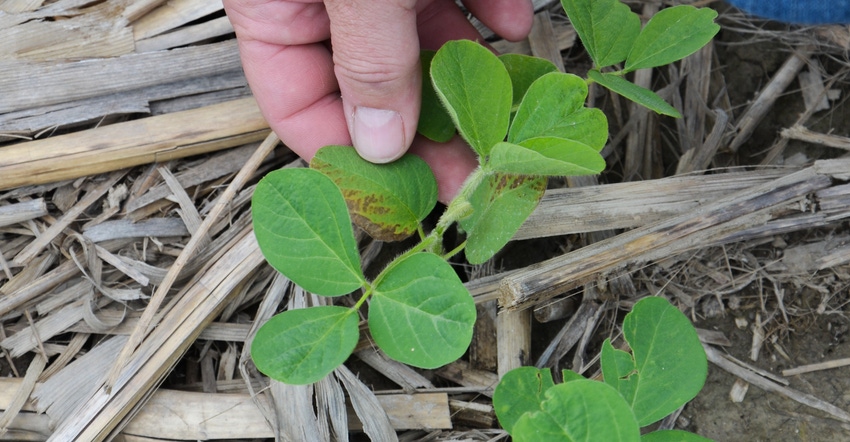
The idea behind the Soybean Watch project is to observe what’s happening in one field of soybeans and relate it to what you might see in your fields.
Steve Gauck, Beck’s sales agronomist in Greensburg, Ind., says that’s challenging this year because there could be soybeans that someone planted early while another person on the farm planted corn that will reach the R1 stage soon. Meanwhile, at press time, soybeans for the field Gauck will observe this year were still in the bag. Perhaps by now they’re planted and up, but if so, they will be at a very young growth stage.
Beck’s sponsors Soybean Watch ’19. Until there are actual beans for Gauck to observe in the Soybean Watch field, he will provide advice that could apply to your fields if you have plants emerged and growing.
Growth stages
“It’s important to follow growth stages and be able to recognize when soybeans reach various stages,” Gauck says. “Several management decisions are tied to growth stage of beans in the field.”
For example, if you’re applying dicamba herbicide on Xtend soybeans, the label says you can apply 45 days after planting or until beans reach the R1, or flowering, stage. If you’re going to apply fungicides this year on soybeans, most agronomists recommend applying at R3, unless you’re specifically after white mold. If so, you should apply earlier.
Scouting and several treatment thresholds for various insects and diseases revolve around growth stages. Gauck uses the Purdue University Corn and Soybean Field Guide as a reference for growth stages. Here are brief descriptions based on that guide. Refer to the guide for more complete details.
Emergence. The cotyledons, which were the seed halves, and the growing point, a single leaf, are above ground.
Cotyledons expanded, or VC. Cotyledons and unifoliate large leaves are fully expanded.
Second-node stage, or V2. The margins of the leaflets of the second set of trifoliate leaves no longer touch each other.
Sixth node stage, or V6. The plant has progressed through the various vegetative stages. At this point, leaves of the sixth trifoliate, counting from the bottom, no longer touch each other. As soon as the sixth trifoliate set of leaves unfurls, it counts as a V6 plant.
Beginning bloom, or R1. At this key stage, there is an open flower at any node on the main stem of the plant. Flowering is partially controlled by photoperiod, or length of night hours, but can also be influenced by other factors, including planting date.
Full bloom, or R2. An open flower at one of the two uppermost nodes on the main stem has a completely unrolled leaf. Sometimes it’s referred to as a flat leaf.
Beginning pod, or R3. Examine one of the four uppermost nodes on the main stem. If you find a pod that is one-quarter inch long, the plant has reached the R3 stage.
Full pod, or R4. Again, look for pods in one of the uppermost four nodes. Once a pod reaches three-quarters inch long, the plant is in the R4 stage.
Beginning seed, or R5. There is now seed in the pod in one of the four uppermost nodes. The seed must be at least one-eighth inch long.
Look for future articles detailing later stages as the season progresses.
About the Author(s)
You May Also Like




